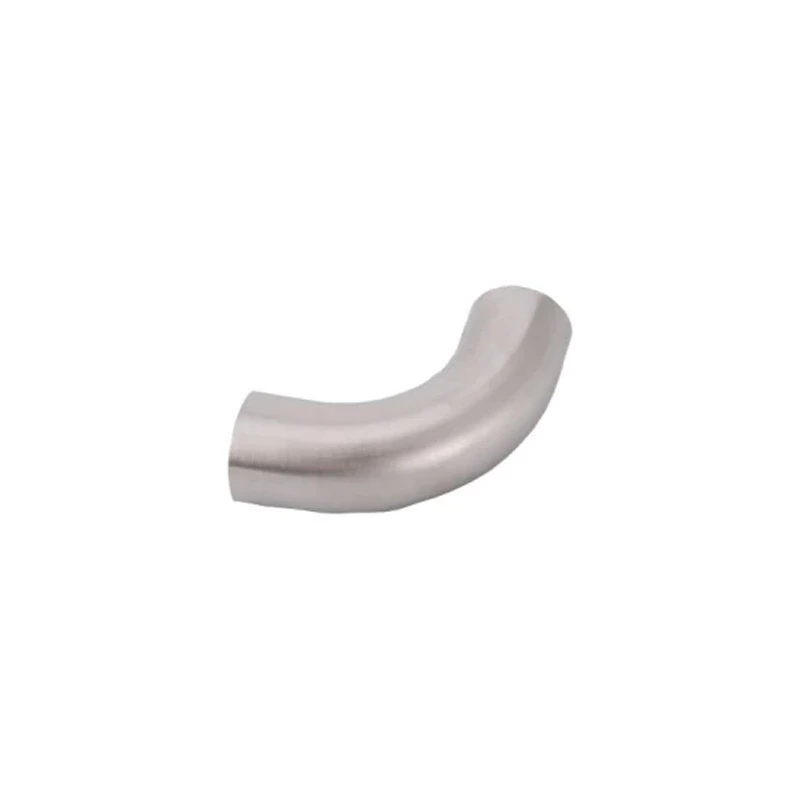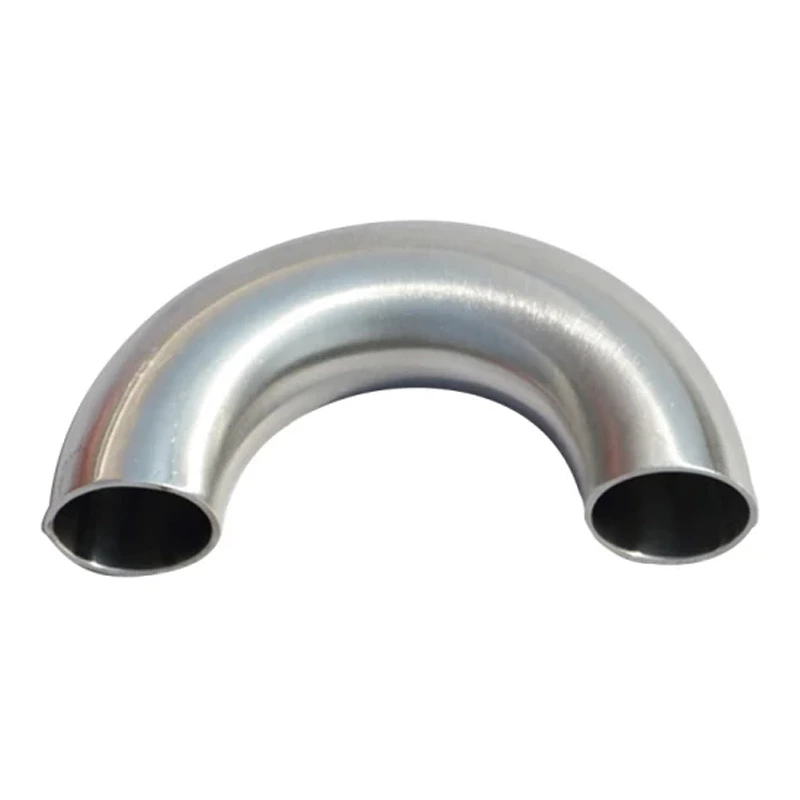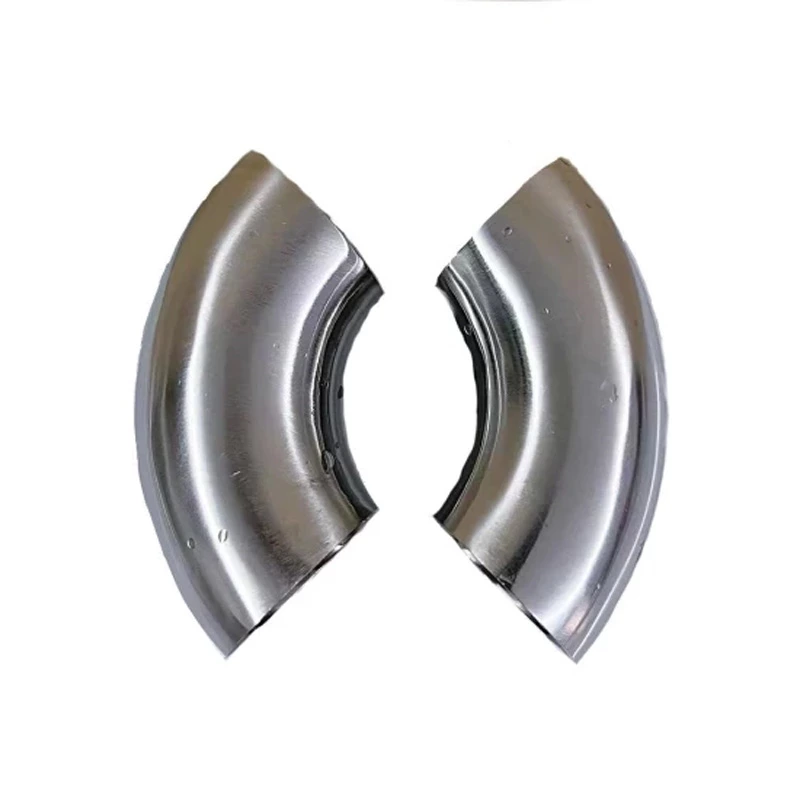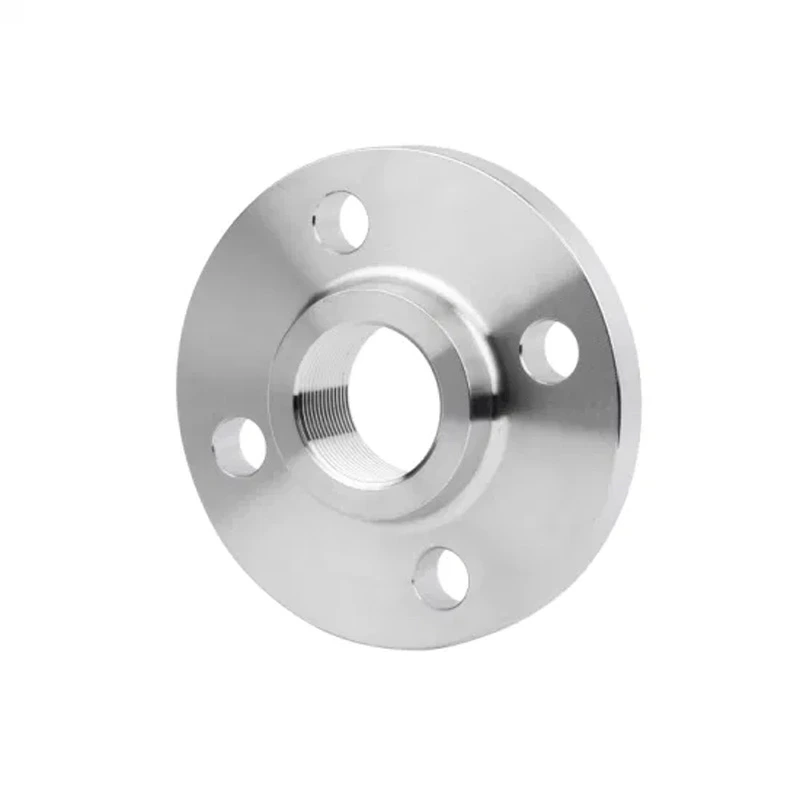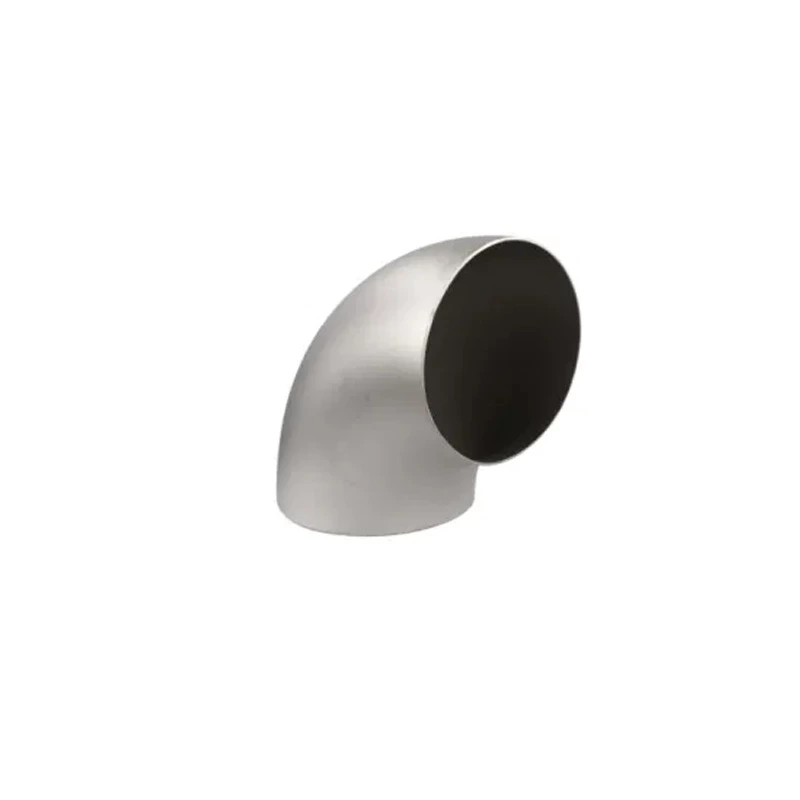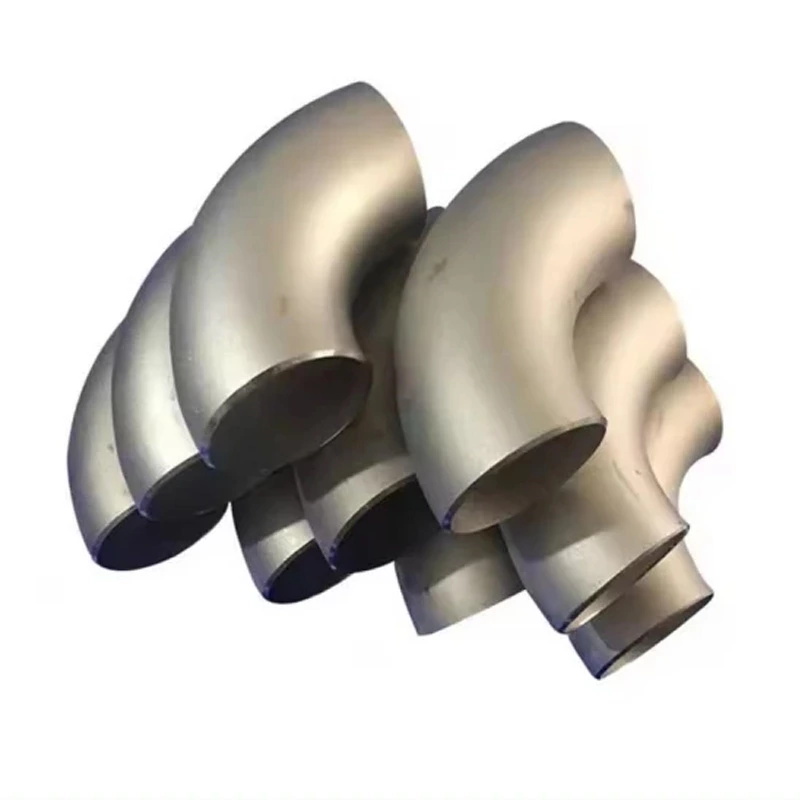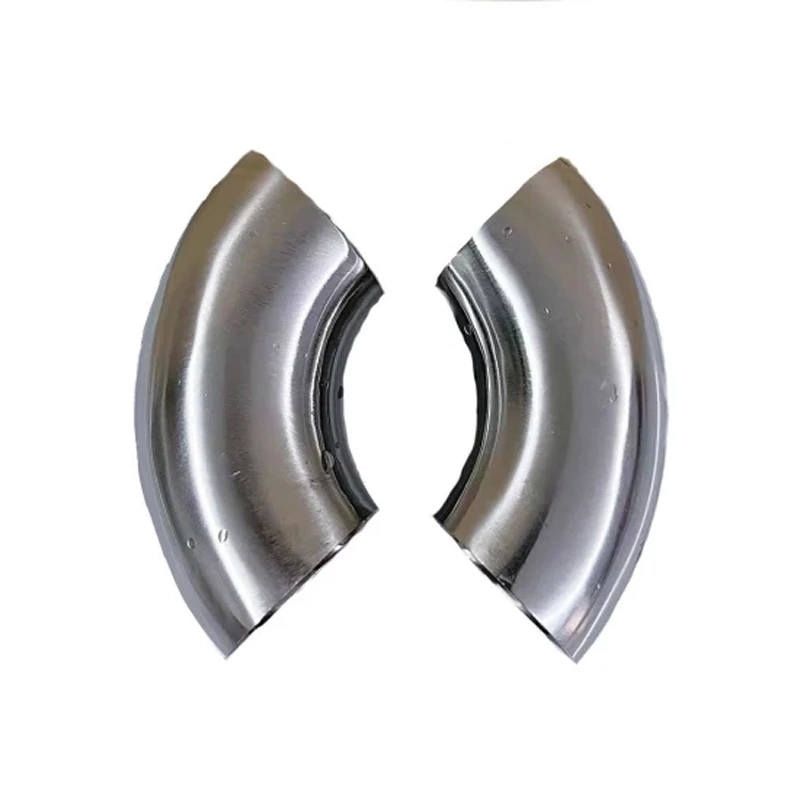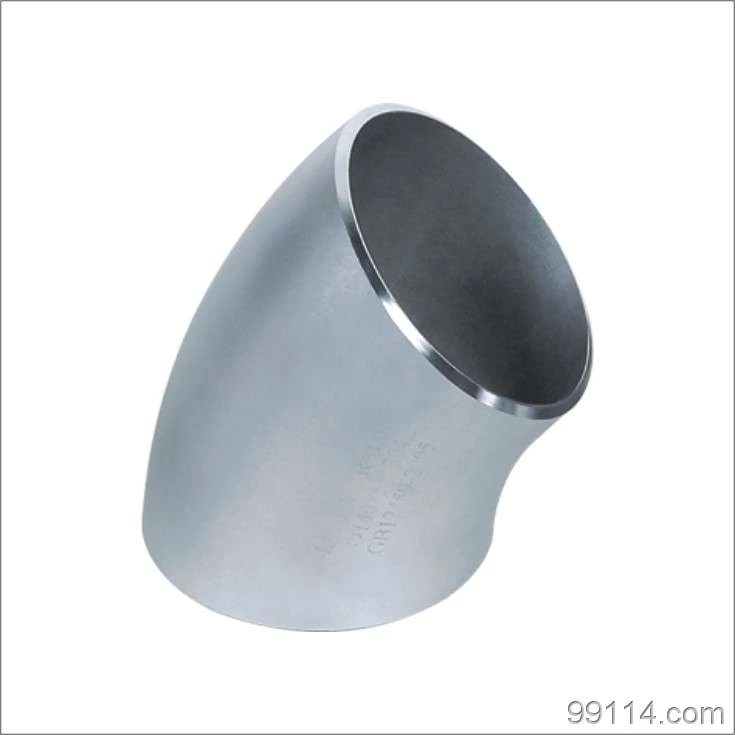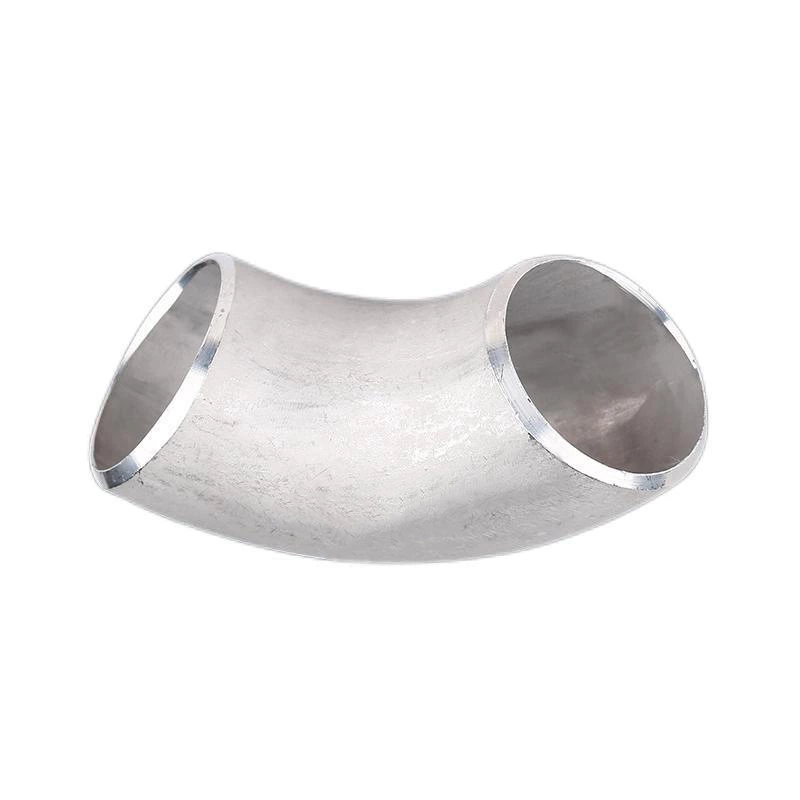The Use Requirements Of Stainless Steel Thick-walled Stamped Elbows In Different Regions And Industries
Stainless Steel Weld Elbow is divided into cold stamping and hot stamping. Generally, cold stamping or hot stamping is selected according to the material properties and equipment capabilities. The forming process of cold extruded elbows is to use a special elbow forming machine to put the tube blank into the outer mold. After the upper and lower molds are closed, the tube blank moves along the reserved gap between the inner and outer molds under the push of the push rod to complete the forming process. The elbows made by the inner and outer mold cold extrusion process have beautiful appearance, uniform wall thickness and small dimensional error. Therefore, this process is often used for stainless steel elbows, especially thin-walled stainless steel elbows. The inner and outer molds used in this process have high precision requirements; the wall thickness error requirements of the tube blank are also relatively strict.
The alloy thick-walled stamped elbow has good pressure resistance. However, due to various factors, the actual wall thickness of floor heating pipes is generally , and under this wall thickness, all kinds of pipes can meet the requirements of floor heating, and the advantages of national standard stamping elbow pipes that are not afraid of pressure are not reflected; thermal conductivity: pipes used for floor heating need to have good thermal conductivity, low temperature resistance, and good low temperature resistance. No pipe blanks are required as raw materials, which can save the cost of pipe making equipment and molds, and can obtain elbows with any large diameter and relatively thin wall thickness.
Compared with the hot push process, the appearance quality of stamping is not as good as the former; the outer arc of the stamping elbow is in a stretched state during forming, and there is no remaining metal in other parts to compensate, so the wall thickness at the outer arc is thinned by about 10%. However, due to its suitability for single-piece production and low cost, the stamping elbow I process is mostly used for the production of small batches and thick-walled elbows.
Stainless steel pipe fittings are used in different areas and industries. They need to be produced and used in accordance with the corresponding standards when used. The following explains the precautions and methods of stamping elbows. Pay strict attention when using them to determine the quality and performance of stamping elbows so that they have a good service life.
1. The alloy thick-walled stamping elbow has high hardening after welding and is prone to cracks. Different welding rods are used for welding to determine the quality of the welded stamping elbows. If the same type of chromium stamping elbow welding rod is used for welding, it is necessary to preheat at more than 300°C and slow cool at about 700°C after welding. If the weldment cannot be heat treated after welding, chromium-nickel stamping elbows should be used. Different types of welding rods have different performance and characteristics in use. They are selected according to the corresponding needs in use to determine the quality of the welded stamping elbows.
2. In order to improve the corrosion resistance and weldability of the stamping elbow, appropriate amounts of stability elements Ti, Nb, Mo, etc. are appropriately added during production, and the weldability is better than that of chromium stamping elbows. When using the same type of chromium stainless steel stamping elbow, preheating above 200℃ and tempering treatment at about 800℃ after welding should be carried out. If the weldment cannot be heat treated, chromium-nickel stainless steel stamping elbow should be used.
3. Alloy thick-walled stamping elbows have good corrosion resistance and chemical reactivity. Good characteristics have led to their use and promotion in different regions, and are widely used in chemical, fertilizer, petroleum, and medical machinery manufacturing.
4. Alloy thick-walled stamping elbows have corresponding corrosion resistance (oxidizing acid, organic acid, cavitation), heat resistance and performance. Usually used for power stations, chemical, petroleum and other equipment materials. Chromium stainless steel stamping elbows have poor weldability, and attention should be paid to welding process, heat treatment conditions and the selection of appropriate welding rods.
5. Alloy thick-walled stamping elbows have titanium calcium type and low hydrogen type. Titanium calcium type can be used for AC and DC, but the penetration depth is shallow during AC welding, and it is easy to turn red, so stainless steel stamping elbows should use DC power supply as much as possible.
6. Alloy thick-walled stamped elbows should be kept dry during use. Titanium-calcium type should be dried at 150℃ for 1 hour, and low-hydrogen type should be dried at 200-250℃ for 1 hour (do not repeat drying for many times, otherwise the skin will crack and peel off easily). Prevent the stainless steel stamped elbow skin from sticking oil and other dirt, so as not to increase the carbon content of the stainless steel stamped elbow weld and affect the quality of the weldment.
7. When the alloy thick-walled stamped elbow is welded, carbides will be released after heating, and carbides will be precipitated after repeated heating. The released carbides will affect the performance of the stamped elbow, reduce the corrosion resistance and mechanical properties.
The alloy thick-walled stamped elbow is a half-piece annular elbow punched by the die, and then the two half-piece annular elbows are welded together to form an elbow product. However, the welding specifications of various types of pipelines are different, so there are also requirements for the thickness of the product during on-site construction. In the process of calculation, in the process of calculating the wall thickness, the thrust and thrust of the interface are usually qualified. Of course, whether the pipe docking is correctly configured, the stress intensification coefficient and the flexibility coefficient should be calculated at the place where the pipe is calculated. Of course, recalculate and check the time. Calculate the pipe wall thickness of the stress intensification coefficient at the stamping elbow, and then calculate the wall thickness by the weight of the elbow. The straight pipe that will be opened along the line of the stamping elbow is determined to be the same as the weight of the stamping elbow. The wall thickness of the stamping elbow is the weight of the stamping elbow.
